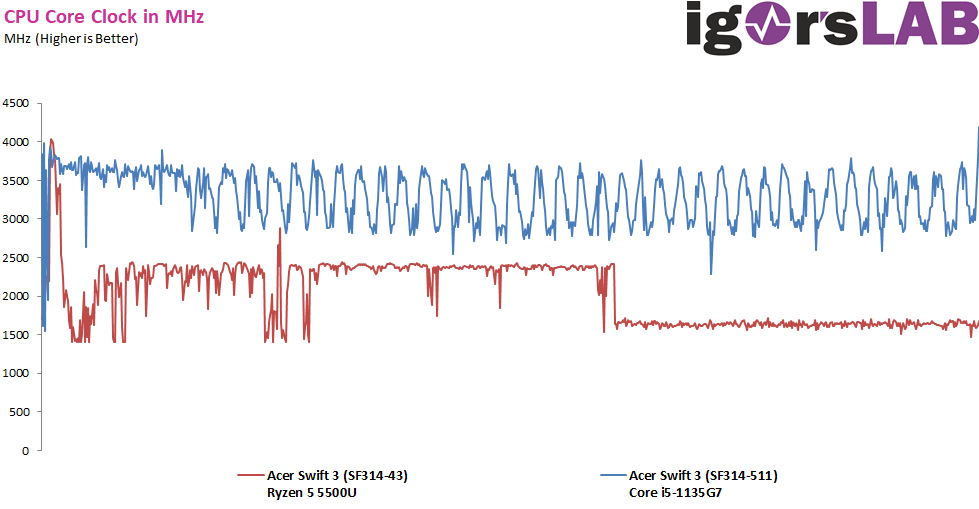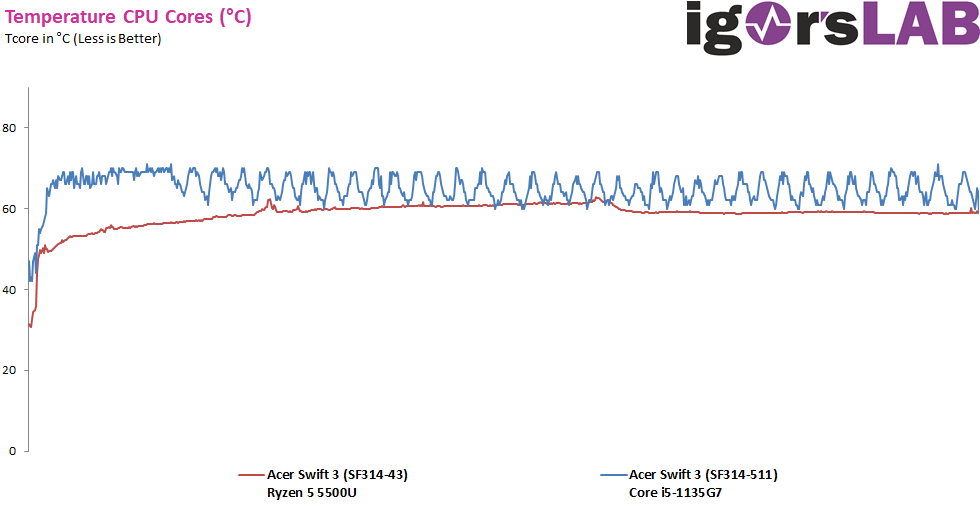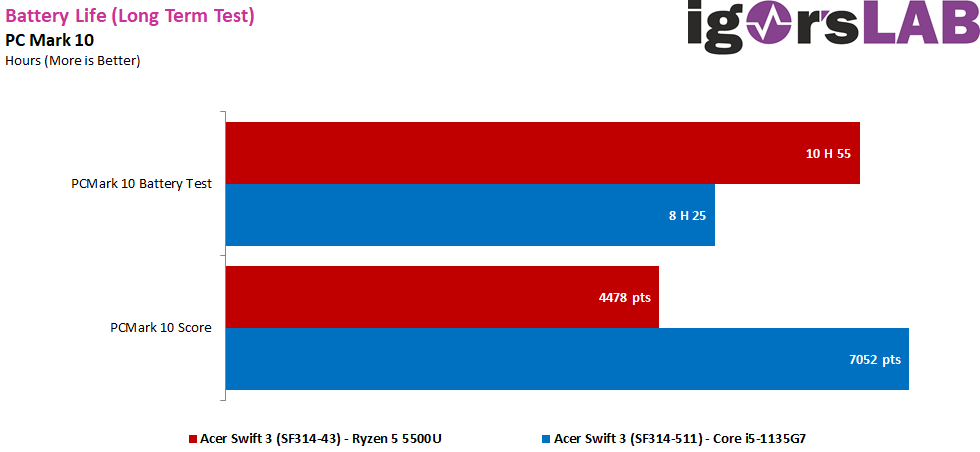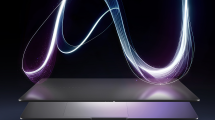Battery runtime
The identical chassis and battery between these two versions of the Acer Swift 3 allow us to measure and compare battery life in a completely fair way. Based on the different listing intake (“power consumption”), it is possible to check which platform ends up consuming more power. For this test, we used the PCMark 10 Battery benchmark with the brightness of the panels set to 200 cd/m² and the power management in Windows configured to “normal”.
The difference in battery life between the two platforms is considerable, as we go from 8:25 hours with the Intel platform, which is already an honorable figure, to almost 11 hours with the Ryzen! That’s almost 30% more, which is really not negligible. It is likely that this difference is due to the lower power consumption of the Ryzen compared to the Core i5, which is partly due to the better fineness of the clock increments. However, the result of this test shows another important aspect: The performance of the Intel platform seems to be better in battery mode than that of the model with AMD CPU, but also somewhat at the expense of the runtime.
Temperatures, power consumption and noise development
To stress the platforms and see how the processor behaves, we play the game The Witcher 3 during a 30-minute session in Full HD with all options turned off. The processors from Intel and AMD behave visibly differently under load. The Core i5’s frequency and temperature fluctuate regularly, while AMD’s Ryzen gradually raises the temperature with a lower and much more stable frequency.

By the way, it is noticeable that the Intel CPU reaches higher temperatures: It goes up to a maximum of 71 °C, while the Ryzen 5 5500U only reaches 63 °C. However, both processors remain far from their operating temperature limits. The Ryzen’s behavior is also interesting after 20 minutes: Its frequency drops significantly from approximately 2.4 GHz to 1.6 GHz. Still, the temperature remains reasonable and far from what the Ryzen could handle, and the EDC and TDC limits are far from reached. It’s hard to say what is causing this behavior, other than a limit (power consumption or temperature) is reached somewhere, perhaps in the platform’s power supply level, or it’s simply a brake from the manufacturer. For whatever reason.

The Intel platform’s consumption fluctuates over time in the same way as the processor’s frequency or temperature. The oscillation comes from the PL4 consumption limit (i.e. the platform as a whole) being reached, forcing the processor to periodically lower its consumption and thus its frequency. On AMD’s side, the curve is more stable, with the drop at 20 minutes also found here.
Noise generation (“loudness”)
In terms of noise, the model with the Core i5-1135G7 is surprisingly a bit quieter, although it has a higher TDP and one would rather expect a heavier load on the cooling system. However, the difference between the two models is quite small in practice, and the noise development is very acceptable in both cases. The rest, like the paradox with the stronger downclocking of the AMD CPU, is left to the conspiracy theorists and we won’t comment further. The manufacturer must have thought of something. Hopefully.




































12 Antworten
Kommentar
Lade neue Kommentare
Urgestein
Veteran
Veteran
Mitglied
Urgestein
1
Urgestein
Mitglied
Mitglied
Mitglied
Veteran
Alle Kommentare lesen unter igor´sLAB Community →